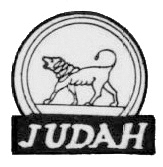Region: NEGEV. Main Cities: BEERSHEBA.
The tribe of Simeon inhabited the most southerly of all the tribal areas. The central city of Beersheba was known from the time of the Patriarchs. At the ancient archeological site of Tel Sheba biblical cities were discovered. Warehouse structures, religious sacrificial sites, walls and water cisterns were all found. Beersheba was an important centre for all the citizens in the area, because of the large supply of water, which formed an oasis. To this day Beersheba is the market centre for all the areas Bedouin and other residents. The surrounding area became the trading centre for all the farmers.
Regions & Tribes |
|
Region: Judean Hills Main Cities: Modiin and Jerusalem.
Region: Shomron Hills Main City: Beit Shean.
Region: Upper Galilee. Main City: Safat.
Region: The Hula Valley Main City: Dan The tribe of Dan was supposed to settle on the coastal plain. The Philistines prevented them from doing this and they moved north east to the Hula Valley. The tribe of Dan captured the city of La-ish and changed its name to Dan. An important archeological discovery there was a stone inscribed in Aramaic with the words "House of David". To-day the area is covered with forests, irrigated by the river Dan, which is the most important source of the River Jordan. The river Dan is fed by the melted snows of Mount Hermon. People made their living in this area from field crops. The city of Dan was also an important centre on the spice trading route.
Region: Judean hills Main city: Jerusalem The tribe of Judah settled on the central hills of Canaan. King David captured the Canaanite city of Yevus, which was situated in the area of the tribe of Benjamin. He changed the name to the city of the House of David. This later became known as Jerusalem. People made their living from growing olives, grapes and various fruits. The main cities in the area are Jerusalem, Bethlehem and Hebron.
Region: Golan Heights Main City: Katzrin. Half the tribe of Menasha settled in the Golan. Three million years ago the area suffered a volcanic eruption, covering the soil with basalt lava. The Biblical name of the town "Golan" was later adopted for the whole region. The Golan Heights is divided into north, central and south, according to the topography, which has a bearing on the vegetation. The melting snows of Mount Hermon feeds the streams and rivers. Special quality soil and climatic conditions contribute to the unique flavours of the many varieties of honey. The modern regional town of Katzrin is known for its fine wines and fruits.
|
|||||






